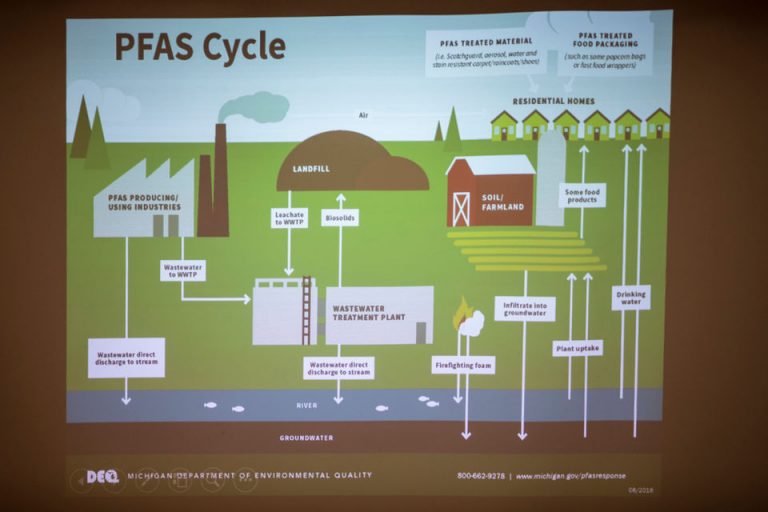You’re concerned about PFAS. MLive has answers to your questions
By Paula Gardner | Mlive | May 16, 2019

Read the full article by Paula Gardner
"What do you need to know about PFAS in water?
Michigan is confronting how PFAS contamination is affecting the state. So far, it’s learned that at least 1.5 million residents and thousands of miles of waterways are impacted by the chemicals.
The state has issued warnings on drinking water, eating contaminated fish and ingesting PFAS foam. It’s also poised to upgrade the alert on foam, signifying that people now should not be touching it. Beyond that, it is considering legislative and department-level changes on its approaches to the chemicals.
But what does all of that mean for the average person?
Here are some answers to the questions many people are asking about PFAS.
PFAS are a family of chemicals that are per- and poly-fluroalkyl substances. They’re man-made and used in products and situations when the goal is to repel water.
Consumers may know them as Scotchguard, Teflon or Gore-Tex. They’re also used in some firefighting foam (known as AFFF); industrial process to control harmful fumes; and product packaging.
Contamination in Michigan is reaching the water from sources like improper waste disposal; wastewater treatment systems; landfills; and AFFF reaching drainage systems.
People are concerned about PFAS because of the harmful health effects – and because they travel through water that may be a drinking water source. In addition, they don’t biodegrade.
Companies that made the substances researched some of those health effects. More recent data adds to what is known: PFAS is linked to cancer; endocrine disorders; high cholesterol; developmental delays; and immune system disorders…
Drinking water is a significant route for human exposure.
Drinking water remains a top concern for PFAS exposure, according to experts.
The chemicals were created to be water-repellent. Now we also know they travel through water and they’re persistent in the environment, so they don’t just “go away” at the speed of an organic compound. They’re also bioaccumulative, meaning they accumulate in the body over time…
Today, people in at least 43 states are affected by PFAS in drinking water, according to recent research from Environmental Working Group. Michigan’s testing is further than many states in assessing the reach of the contaminants, and its work continues.
Here is a link to the EWG report. …If you’re on a well:
About 2.5 million Michigan residents depend on wells for water. The majority of those remain untested for PFAS, unless a home is in a designated zone near a site with an active investigation.
Are you in or near one of those locations and have concerns? Call your county health department to check. This link provides contact information for each of them. And this link gives advice collected through the Michigan PFAS Action and Response Team.
Experts recommend private well testing because other contaminants also could be in your water…
More on assessing your water quality:
If you’re on a public water supply, you should be getting an annual consumer confidence report. They’re often issued in July, so watch for the latest one soon.
It will tell you where your water is coming from, what kind of treatment it gets, what contaminants, if any ,were detected in the source water, and what was detected in finished drinking water – or the treated water, which is what reaches taps.
“There’s a lot of great information about water quality in the reports,” said Rick Andrew of NSF International…
Can you filter PFAS out of drinking water?
Water filters top the list of reader questions.
They’re also top of the list in PFAS-related consumer product research and manufacturing. Over the past year, many more filters were brought to market and many of them were certified by NSF International for PFOS and PFOA reduction…From NSF: Today, 10 manufacturers are producing a total of 73 different products that have been NSF certified to reduce PFOA and PFOS to below the U.S. EPA’s health advisory level of 70-ppt.
Here is a list.…Filters have their limits. It’s important to know that they are certified for PFOA and PFOS, but they may not work for other PFAS compounds. An estimated 3,000 of them have been in use, but about two dozen are included in statewide PFAS testing. The state is considering new regulations for some of them. They include PFNA, PFHxS and PFNA.
Michigan even is looking at a new level of monitoring for a so-called “safe” type of PFAS.…"
This content provided by the PFAS Project.
Location:
Topics: